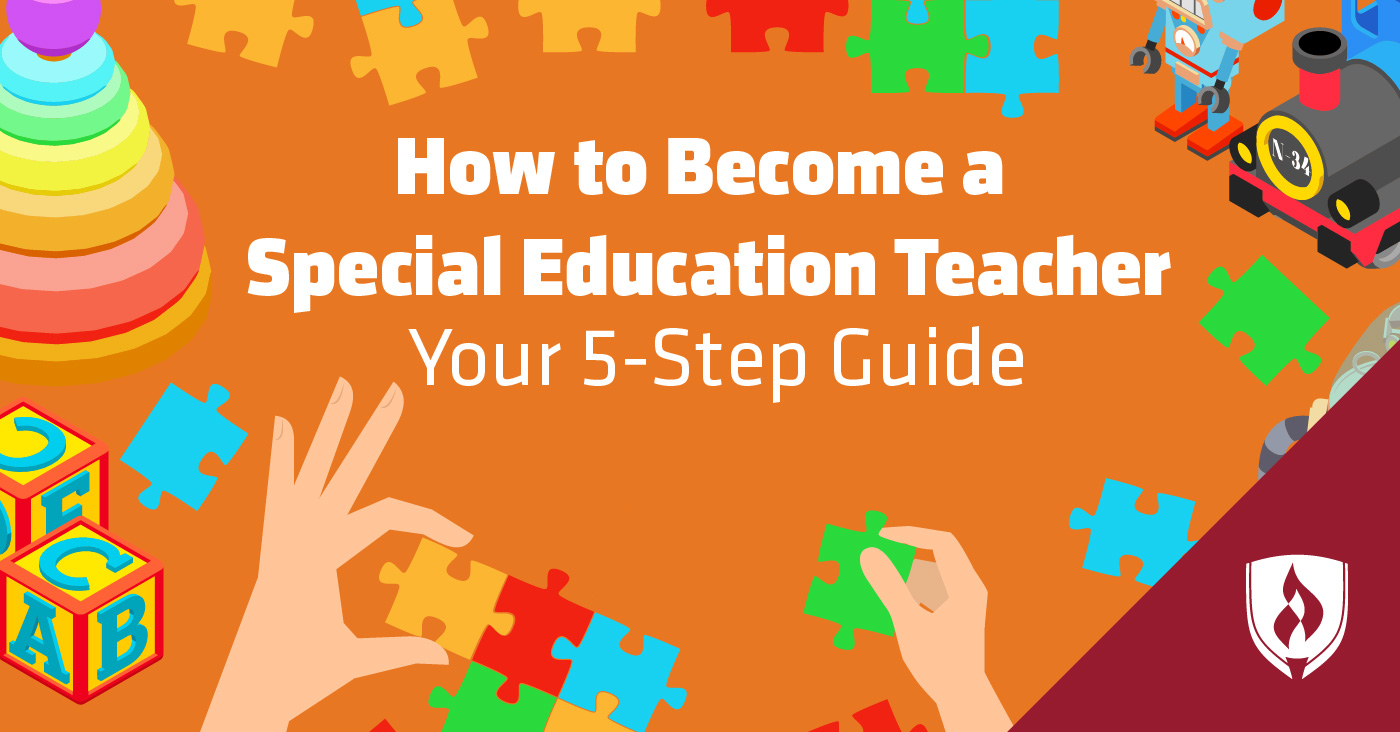
You have a passion for working with children with special needs, and it’s growing stronger every day. Whether it’s spending the day at the zoo with a family member who has autism or volunteering to read with children who are struggling with dyslexia, you feel called to turn this passion into a career.
Becoming a special education teacher sounds like the perfect job. You can’t imagine anything more fulfilling than working with children who have physical, cognitive or learning disabilities and helping them achieve their full potential.
There’s just one problem: You don’t know how to become a special education teacher. It seems like a career specialty that could require years of training, and you’re worried you don’t have the time or money to embark on this path.
Becoming a special education teacher may sound daunting, but it may be easier than you think. We did the research and spoke to special education teachers to bring you this five-step guide to becoming a special education teacher. Keep reading to discover your first step toward a career that could change lives!
5 Simple steps to becoming a special education teacher
1. Enroll in a teaching program that meets your needs
All public schools require their special education teachers to hold a Bachelor’s degree, according to the Bureau of Labor Statistics (BLS). Public schools aren’t the only option for special education teachers, however. Some jobs may not require a four-year degree, such as working for a childcare center, preschool or individual families.
You’ll need to find a degree program that fits your needs, regardless of which type of degree you decide to pursue. Consider flexible options like online courses and self-paced learning, which can make your education more affordable and easier to fit into your busy schedule.
You may also want to look for programs that focus specifically on special needs education.
“Special education courses focus on creating, monitoring and delivering intervention,” says Julianne Miller, a specialist teacher and tutor at Special Educational Needs. She adds that these specialist programs will help you develop intervention plans for each individual child rather than trying to applying a one-size-fits-all learning strategy to students who learn differently.
2. Student teach and build experience
Once your education is underway at your chosen degree program, you’ll likely need to get some hands-on experience through student teaching. This training is required to become a public school teacher in certain states, but it doesn’t hurt to have the extra experience even if it’s not required by law.
Many degree programs include student teaching as part of your education. Others may include other types of valuable applied learning, such as volunteering or pursuing research related to special education topics.
3. Become certified
There’s still one more step to go after completing your degree program and gaining hands-on experience: becoming certified, or licensed, to teach in your state.* Though the certification process varies from state to state, you’ll most likely need to pass your state’s licensing exam to be qualified to teach in a public school. Some private schools and childcare centers don’t require a license, so be sure to dig into the rules for your state and desired place of employment.
Different states may also offer additional certifications specific to special education, or even specific disabilities, such as dyslexia or autism. If these certifications are available in your state, obtaining them can show employers that you have the depth of knowledge it takes to truly make a difference in the education of a child who has special needs.
4. Land a job
Now that all the educational requirements are out of the way, your path is clear to begin working in the field. The BLS expects special education teachers to have good job opportunities in the coming years. “Job opportunities also may be better in certain specialties, such as those requiring experience with early childhood intervention and skills in working with students who have multiple disabilities, severe disabilities or autism spectrum disorders.”
You’ll have the training and the specialized skills employers are looking for in their special education teachers.
5. Continuing education
Your journey as a special education teacher doesn’t end with landing a job. Researchers are constantly shedding new light on how the brain works, and how students with special needs may best be able to learn. Some school districts require their special education teachers to complete a certain number of continuing education hours each year, such as those offered by the National Association of Special Education Teachers.
Miller sees specialized courses and continuing education as positive for everyone involved, especially for the extraordinary children you’ll encounter throughout your career. “We teach children so that they are best able to bring their skills to the world they live in. If you believe in education, then educate yourself. Get specialist training so that you can be the best teacher possible for these wonderful children.”
Take the first step toward your new career path
Now that we’ve shown you how to become a special education teacher, you have all the information you need to turn your passion into your new career.
Choosing and enrolling in a degree program is your first step to changing children’s lives as a special education teacher. Get started today by checking out the Special Needs Specialization in our Early Childhood Education program.
Related Articles:
*Graduates of Early Childhood Education programs at Rasmussen College are not eligible for licensure as a teacher in an elementary or secondary school. A Bachelor’s degree and a state teaching license are typically required to work as a teacher in public and private school settings.




